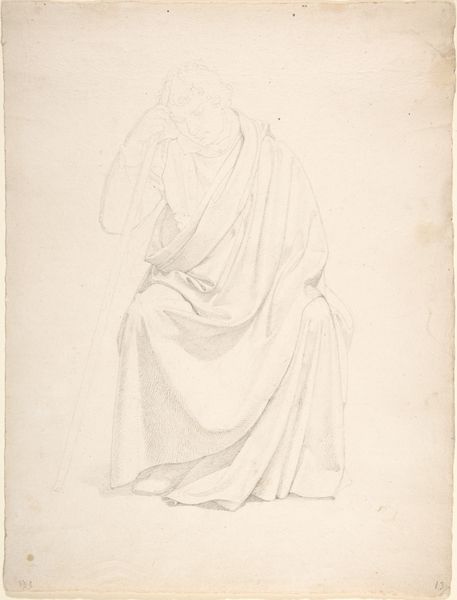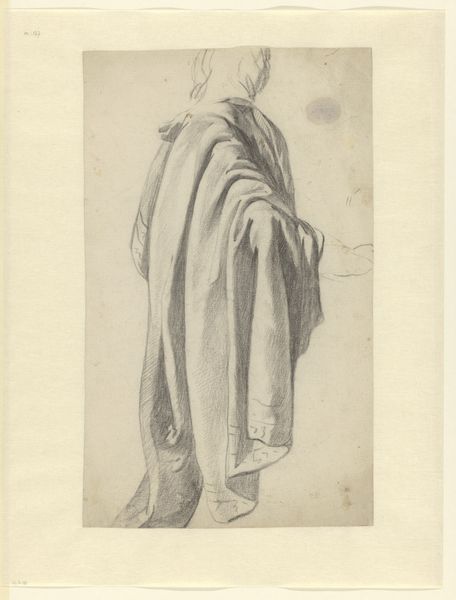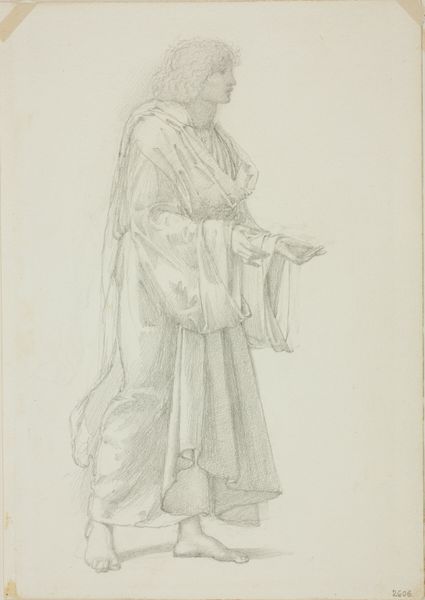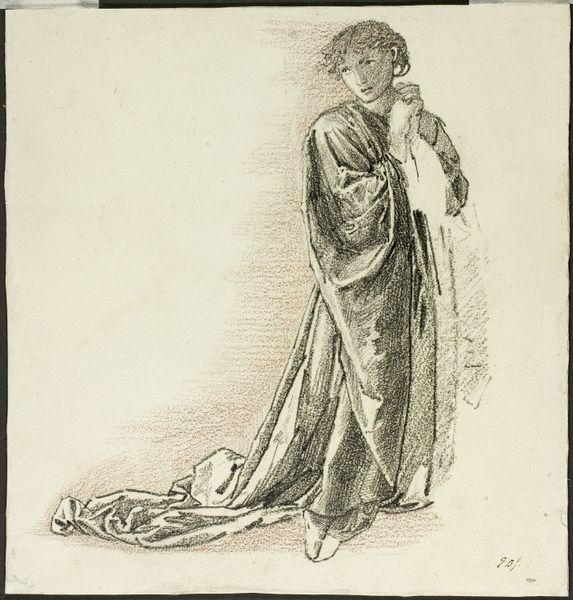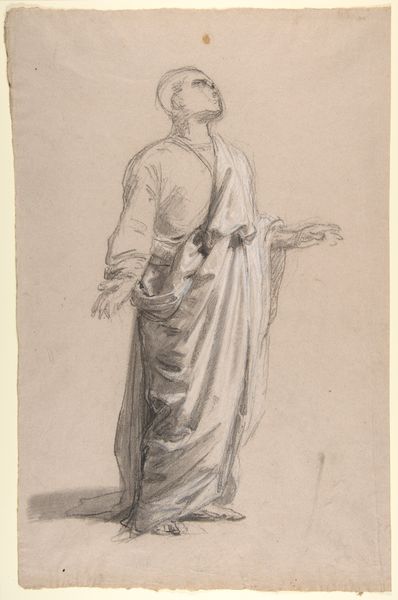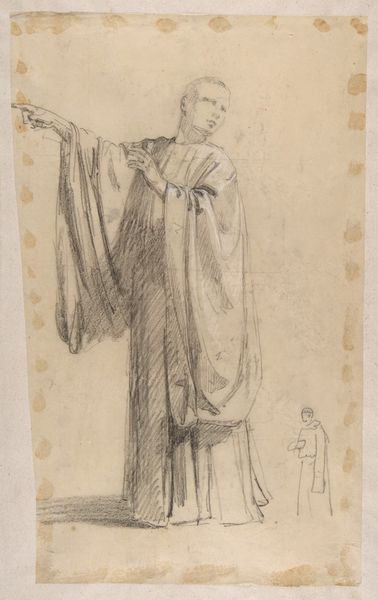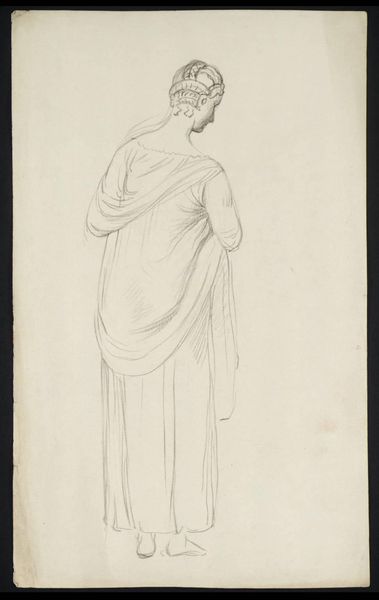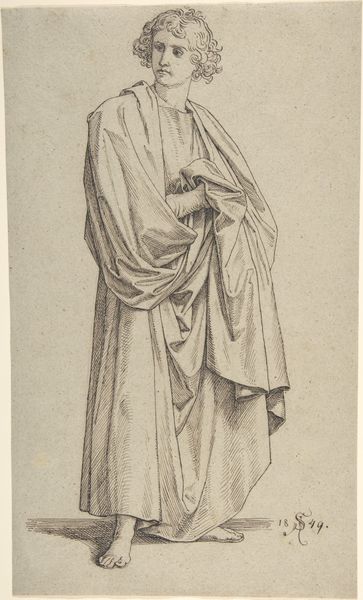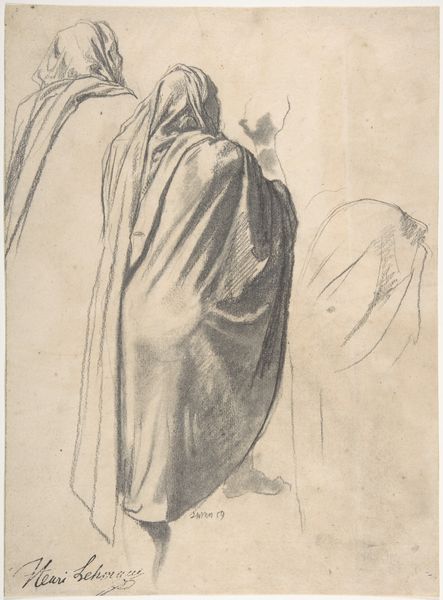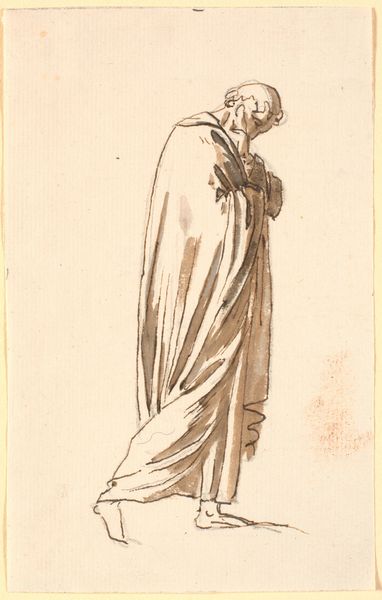
drawing, pencil
#
portrait
#
drawing
#
pencil sketch
#
figuration
#
pencil drawing
#
pencil
#
portrait drawing
#
academic-art
Dimensions: height 340 mm, width 249 mm
Copyright: Rijks Museum: Open Domain
Curator: I find this drawing deeply affecting. The humility in that pose… it’s really palpable. Editor: Absolutely. Looking at “Knielende Damianus” a pencil drawing executed around 1884 by Nicolaas van der Waay, the immediate impression is one of serene devotion. Curator: Devotion but also, for me, incredible vulnerability. Hands clasped in prayer, head tilted towards the heavens –it speaks of surrender. What I’m seeing is a symbolic dialogue between earth and sky. Editor: Yes, and situated historically, the rise of academic art brought with it both beauty and potential pitfalls regarding whose stories get represented—it becomes crucial to explore whether this representation reinforces or challenges power structures of the period. What is it about this specific depiction of devotion, within its context, that moves us or, perhaps, makes us question its intentions? Curator: Well, I think the key to answering that lies within the meticulous rendering of the figure's garb. The flowing lines create a visual pathway, almost directing the viewer's eye upward towards the light source – a source of, shall we say, divine inspiration. It isn’t simply fabric, it’s a physical manifestation of faith, or hope perhaps? Editor: But isn't that emphasis, that aestheticisation of faith, exactly what we should critique? Who defines the "correct" performance of piety, and who is excluded or judged by that definition? This idealization can subtly reinforce existing social hierarchies, using spiritual imagery as a cloak. Curator: Perhaps, but to reduce it to purely political maneuvering feels a little cynical. What of the artist's own intentions? The meticulous draftsmanship! He's chosen the medium of pencil not only to render form and light but also to express, symbolically, the spiritual dimension. He captures something essentially human in its search for connection and transcendence. Editor: Agreed, the draftsmanship is exceptional. Perhaps we find ourselves oscillating between two valid responses: one admiring its symbolic power and masterful technique, and another questioning the potentially manipulative aspects of idealized religious imagery, which requires historical analysis of the period when academic art had influence. Curator: A valuable perspective. It prompts deeper reflection on the nuances of artistic representation. I keep going back to how art invites conversation across centuries, it makes us re-examine and reconsider the ways our beliefs affect us and how to proceed in life. Editor: Precisely. Thank you for enriching my understanding of "Knielende Damianus." These layers and tensions show just how necessary intersectional approaches truly are to a fulfilling experience.
Comments
No comments
Be the first to comment and join the conversation on the ultimate creative platform.
